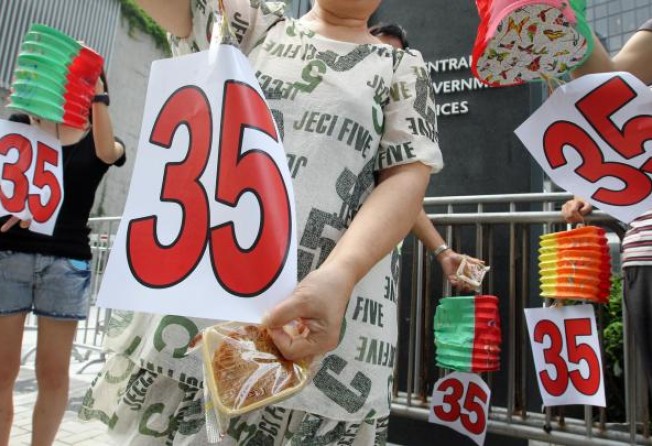
Business fears over minimum wage prove groundless
Government figures show predictions of increased unemployment and company closures were false, with jobs market showing improvement

Dire predictions of company closures and widespread redundancies have failed to pan out, more than a year after the statutory minimum wage was introduced, the South China Morning Post has found.
According to government figures, the numbers show an improved labour market, suggesting the impact of the policy was not as bad as the business sector claimed, although production costs were higher.
Adverse effects including greater operating costs, higher unemployment and company shutdowns formed the main argument of opponents to the minimum hourly wage of HK$28 before the city implemented the policy in May last year.
Paul Yip Siu-fai, an expert in statistics at the University of Hong Kong, said the data showed the sector had tried to intimidate the public into rejecting the minimum wage by predicting companies would go bankrupt.
"It is clear that unemployment has not worsened as the business sector claimed. It has actually improved," Yip said.
Between February and April last year, unemployment stood at 3.5 per cent, Census and Statistics Department figures show.
After the minimum wage came into effect, joblessness fell to 3.2 per cent between June and August. The rate fluctuated in between, but was again 3.2 per cent in the same period this year.
Figures for underemployment show a similar pattern - the rate stood at 1.9 per cent from February and April last year, and dropped to 1.5 per cent between May and July this year.
There has also been no rise in the number of companies being dissolved since the minimum wage became law. In April last year, 6,441 companies were dissolved, compared with 4,451 in May and 6,025 in June. Through the rest of the year, the data fluctuated between 2,800 and 5,000 for most months.
But the manufacturing sector saw higher production costs after the minimum wage was introduced. The producer price index for the manufacturing industry, which the department defined as 100 in 2008, rose to 104.2 in 2010 and to 112.9 in 2011, the year the minimum wage was introduced.
That meant production costs increased 8.3 per cent.
The business receipts index for food services, which was defined as 100 in 2008, stood at 107 in the second quarter last year.
Since then, the index had continued to rise, reaching 111.5 in the second quarter of this year, an increase of 4.2 per cent. Yip said rental expenditure made up a large part of the sector's operating costs, not the minimum wage.
The business sector stood its ground in the wake of the latest government figures.
Simon Wong Ka-wo, president of the Federation of Restaurants and Related Trades, said while the food services sector had performed well, service quality had dropped.
The minimum wage had driven up operating costs at restaurants by 13 per cent, Wong said.
"Many restaurants have had to cut back on staff levels to reduce operating costs," he said.
"There is a serious shortage of staff in many restaurants."
HKU associate professor William Chan, of the school of economics and finance, said it was difficult to draw a conclusion about the impact of the minimum wage from these figures alone.
Many other factors could affect unemployment and business performance, he said.